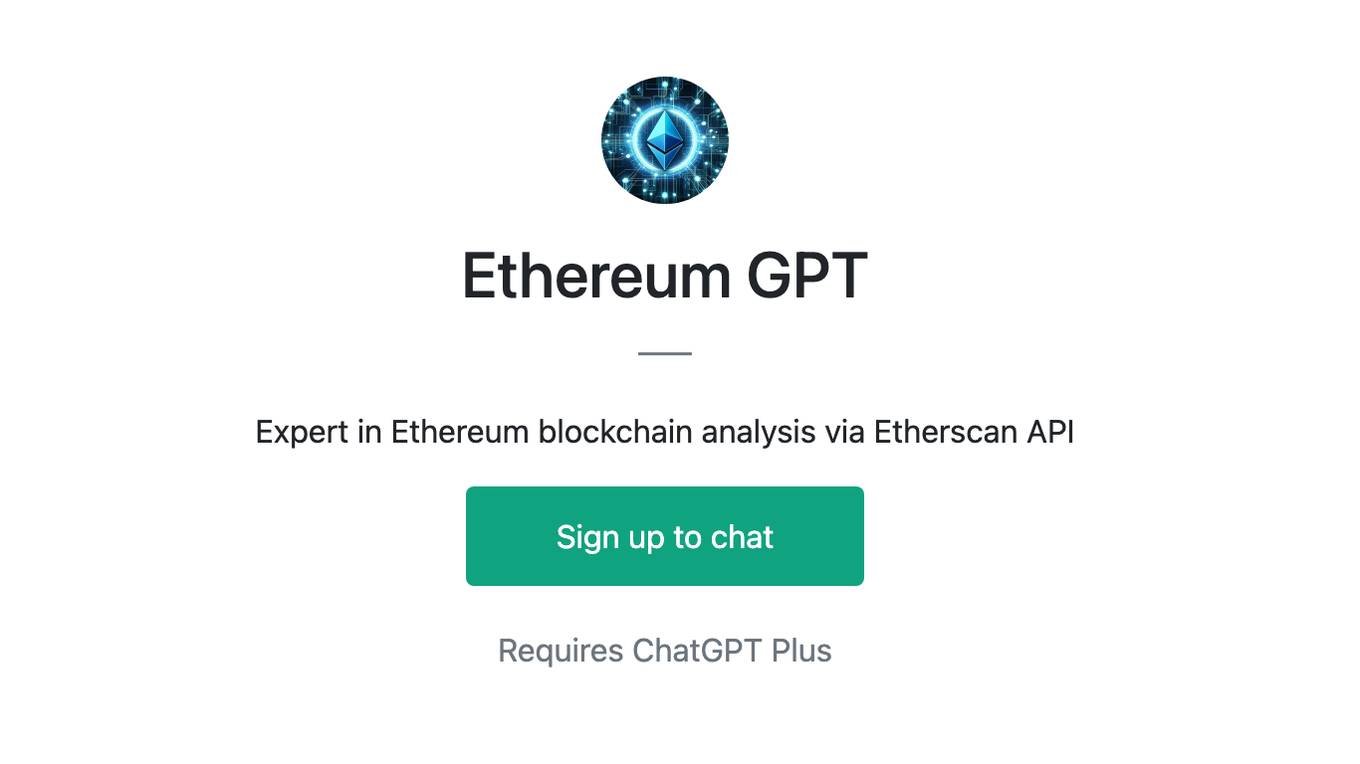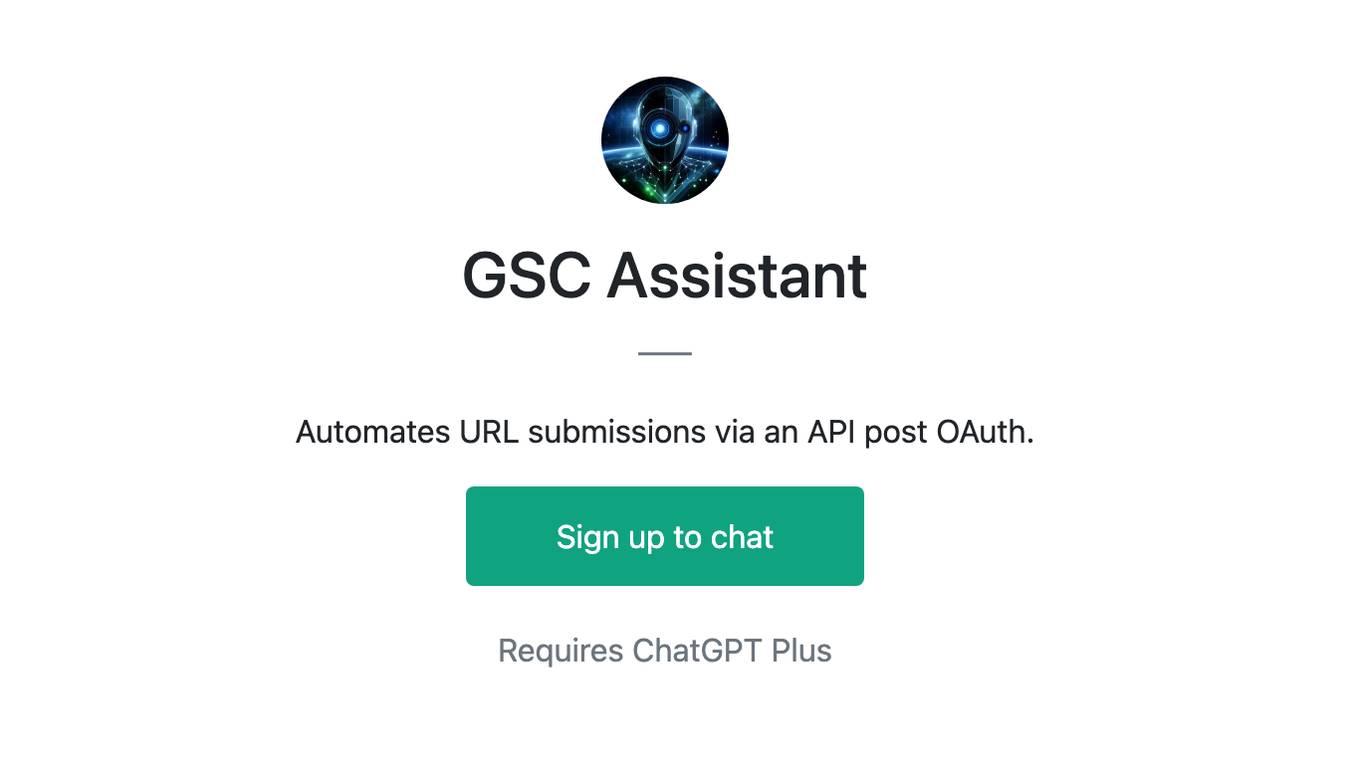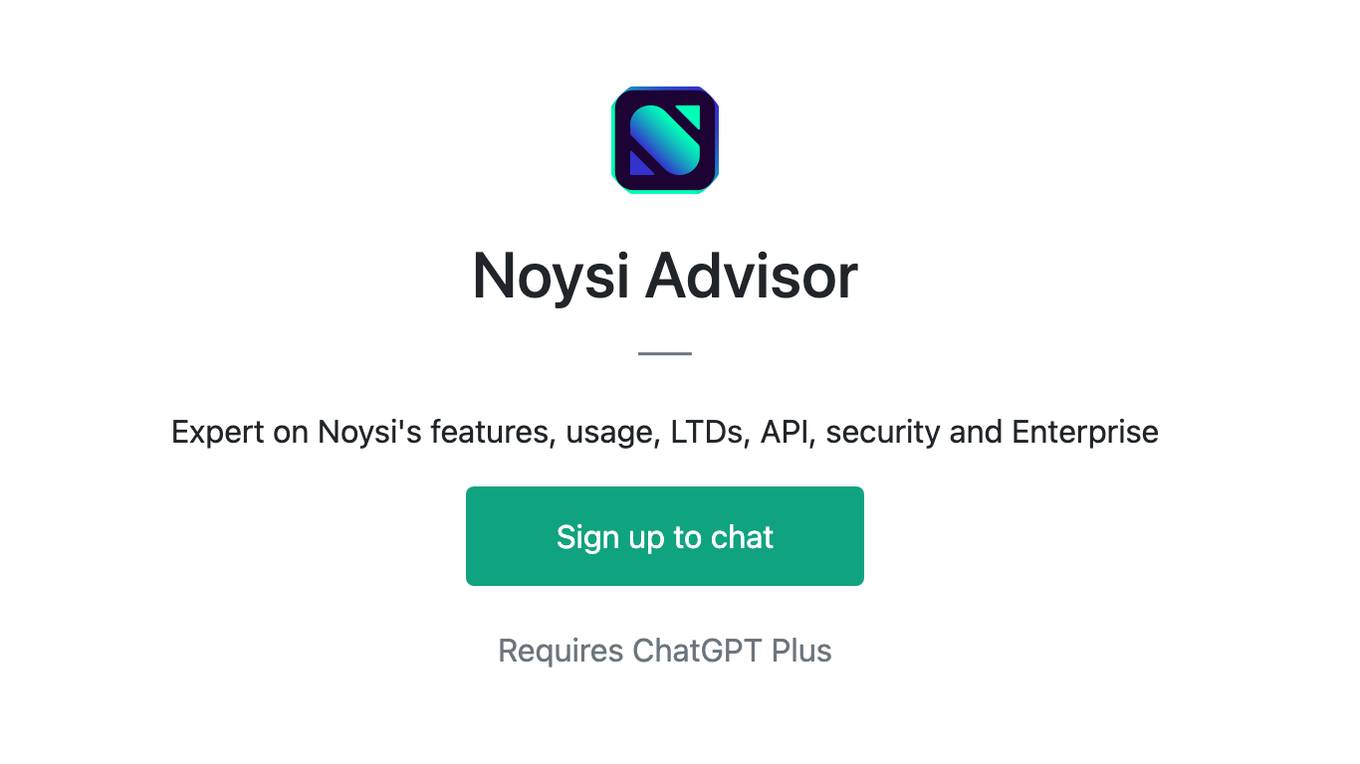Best AI tools for< Track Api Changes >
20 - AI tool Sites

Release AI
Release AI is an AI tool designed to track and document API changes, enabling users to generate release notes efficiently. The tool automates the process of monitoring and recording modifications made to APIs, streamlining the documentation process. With Release AI, users can stay up-to-date with API changes and easily create comprehensive release notes for their projects.

DocDriven
DocDriven is an AI-powered documentation-driven API development tool that provides a shared workspace for optimizing the API development process. It helps in designing APIs faster and more efficiently, collaborating on API changes in real-time, exploring all APIs in one workspace, generating AI code, maintaining API documentation, and much more. DocDriven aims to streamline communication and coordination among backend developers, frontend developers, UI designers, and product managers, ensuring high-quality API design and development.

Crustdata Watcher API
Crustdata Watcher API is a real-time B2B data broker providing live signals on key people and accounts. It offers the freshest and most trusted data to power any product or sales process. The platform delivers real-time company and people data for commercial and internal platforms, enabling users to keep their CRM, investment platform, or ATS up to date. Additionally, it provides live alerts on changes to people and companies, empowering AI platforms and agents with specialized data tailored for the future.

Browse AI
Browse AI is a powerful AI-powered data extraction platform that allows users to scrape and monitor data from any website without the need for coding. With Browse AI, users can easily extract data, monitor websites for changes, turn websites into APIs, and integrate data with over 7,000 apps. The platform offers prebuilt robots for various use cases like e-commerce, real estate, recruitment, and more. Browse AI is trusted by over 740,000 users worldwide for its reliability, scalability, and ease of use.

InstantAPI.ai
InstantAPI.ai is a powerful web scraping API and Chrome extension that allows users to extract data from any website with ease. The tool leverages AI technology to automate data extraction, adapt to site changes, and deliver customized JSON objects. With features like worldwide geotargeting, proxy management, JavaScript rendering, and CAPTCHA bypass, InstantAPI.ai ensures fast and reliable results. Users can describe the data they need and receive it in real-time, tailored to their exact requirements. The tool offers unlimited concurrency, human support, and a user-friendly interface, making web scraping simple and efficient.

Lushair
Lushair is an AI-powered platform that offers personalized hair and scalp analysis solutions. It aims to create a digital and intelligent ecosystem for dermatology, providing accurate skin and scalp solutions that are accessible and affordable. Lushair offers services such as personal subscriptions, skin & scalp analysis SAAS, and skin & scalp analysis API for hair care specialists and brands. The platform features historical tracking, multi-node analysis, improved management, AI-generated hair care plans, and an easy-to-use interface. Lushair has received positive feedback for its standardization, customization, and intelligent services in the field of dermatology.

PromptLeo
PromptLeo is a prompt engineering platform designed to empower organizations in effectively applying Generative AI. It offers a simple interface for prompt engineers to create, test, and change prompts, integrating Generative AI into daily workflows without the need to store prompts in text files. With features like prompt templates, feedback loop & iterations, access to multiple models, and a dedicated prompt engineering library, PromptLeo aims to streamline prompt management and versioning, enhance prompt performance tracking, and facilitate collaboration among team members.

RethinkHOA API
RethinkHOA API is a web-based platform that provides tools and services for managing homeowner associations. It offers features such as communication tools, document management, financial tracking, and community engagement. The platform aims to streamline HOA management processes and improve communication between board members and residents.

Monitr
Monitr is a data visualization and analytics platform that allows users to query, visualize, and share data in one place. It helps in tracking key metrics, making data-driven decisions, and breaking down data silos to provide a unified view of data from various sources. Users can create charts and dashboards, connect to different data sources like Postgresql and MySQL, and collaborate with teammates on SQL queries. Monitr's AI features are powered by Meta AI's Llama 3 LLM, enabling the development of powerful and flexible analytics tools for maximizing data utilization.

Sedo.com
Sedo.com is an online platform for buying and selling domain names. It provides a marketplace where users can list their domain names for sale or purchase domains that are already registered. The platform offers a secure and efficient way for domain investors, businesses, and individuals to connect and transact. Sedo.com ensures the security of transactions and provides tools to streamline the domain buying and selling process.

MacWhisper
MacWhisper is a native macOS application that utilizes OpenAI's Whisper technology for transcribing audio files into text. It offers a user-friendly interface for recording, transcribing, and editing audio, making it suitable for various use cases such as transcribing meetings, lectures, interviews, and podcasts. The application is designed to protect user privacy by performing all transcriptions locally on the device, ensuring that no data leaves the user's machine.

Medallia
Medallia is a real-time text analytics software that empowers organizations to derive actionable insights from customer interactions. With a focus on omnichannel analytics, Medallia's AI-powered platform enables users to identify emerging trends, prioritize key insights, and drive real-time actions. By leveraging natural language understanding and out-of-the-box topic models, Medallia offers customizable KPIs and scalable text analytics solutions for various industries. The platform aims to transform unstructured data into actionable insights to enhance customer and employee experiences.

Stream.Estate
Stream.Estate is a Real Estate Data API application that provides comprehensive property data analytics and market insights through a powerful API. Users can access real-time property insights to make data-driven decisions. The application offers features such as property matching, valuation systems, market intelligence, portfolio analytics, property search API, price evolution analytics, real-time property alerts, smart property sourcing, intelligent valuation engine, and automated lead generation. Stream.Estate is trusted by leading PropTech companies worldwide and offers simple pricing plans for different usage levels.

FareTrack
FareTrack is an AI-driven data intelligence solution tailored for the modern air travel industry. It offers accurate, timely, and actionable insights for airline revenue management, distribution, and network operations teams. By leveraging advanced AI technology, FareTrack empowers clients with competitive fare tracking, ancillary pricing insights, open pricing monitoring, and price rank value optimization. The platform also provides comprehensive travel data solutions beyond airfare, including tax breakdowns, historical fare analysis, and trend analysis. With customizable dashboards and API integration, FareTrack enables users to make informed decisions swiftly and stay ahead in the dynamic world of air travel.
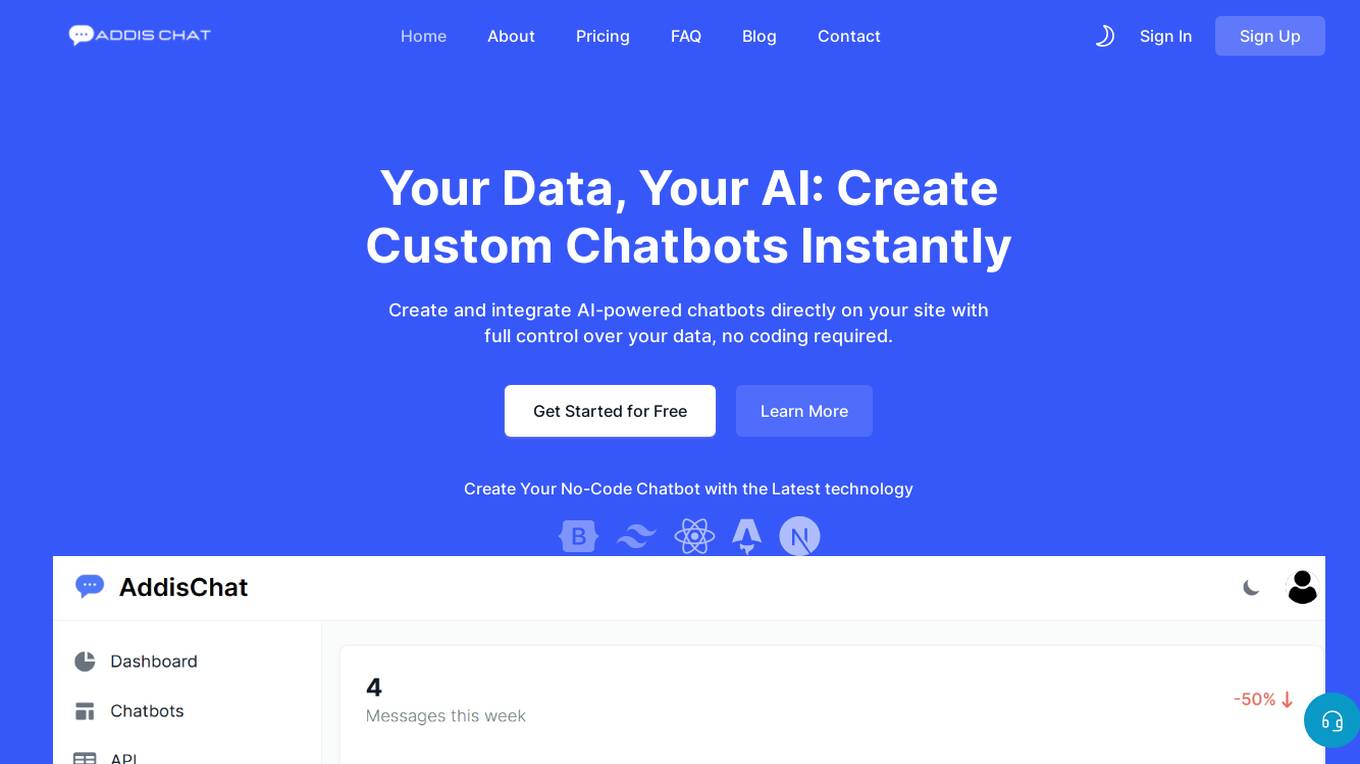
AddisChat
AddisChat is a no-code custom AI chatbot platform that allows businesses to create and integrate AI-powered chatbots directly on their websites. With full control over data and no coding required, AddisChat offers powerful features such as customization options, training data capabilities, user analytics dashboard, and integration capabilities. The platform simplifies chatbot creation and optimization to enhance customer experience and fuel business growth.
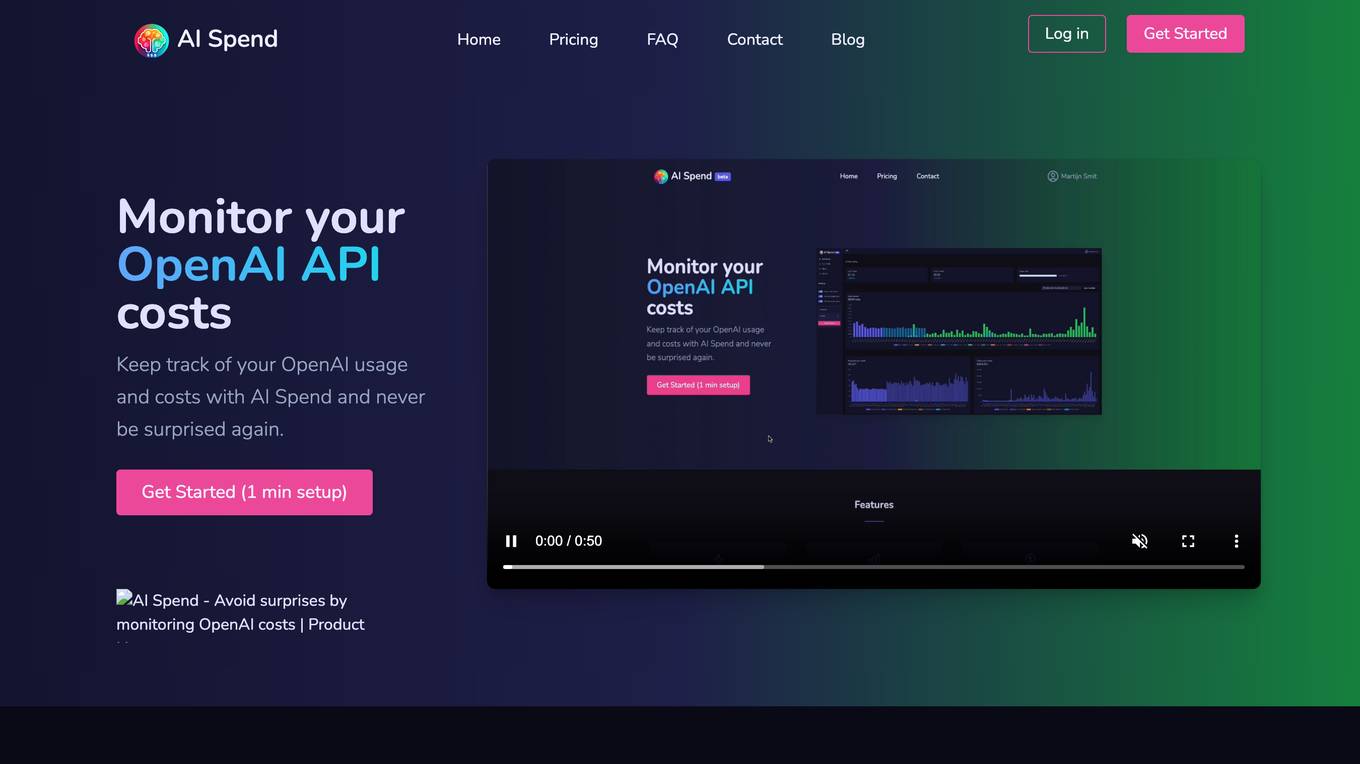
AI Spend
AI Spend is an AI application designed to help users monitor their AI costs and prevent surprises. It allows users to keep track of their OpenAI usage and costs, providing fast insights, a beautiful dashboard, cost insights, notifications, usage analytics, and details on models and tokens. The application ensures simple pricing with no additional costs and securely stores API keys. Users can easily remove their data if needed, emphasizing privacy and security.

BookTranslator
BookTranslator is an online EPUB/PDF book translation tool that empowers effortless reading of global books. It supports translation of books in multiple languages and can accurately translate the entire EPUB/PDF book into the language you want in just one minute. The tool uses the latest AI technology to ensure the best translation quality, providing lightning-fast translations and bilingual content comparison for better understanding. With support for over 74 languages, users can easily translate their books and access their translation history for future reference.

Wati
Wati is a business messaging solution that allows businesses to communicate with their customers through WhatsApp. It offers a range of features such as broadcast messaging, chatbots, and integrations with other business tools. Wati is designed to help businesses improve their customer service, sales, and marketing efforts.
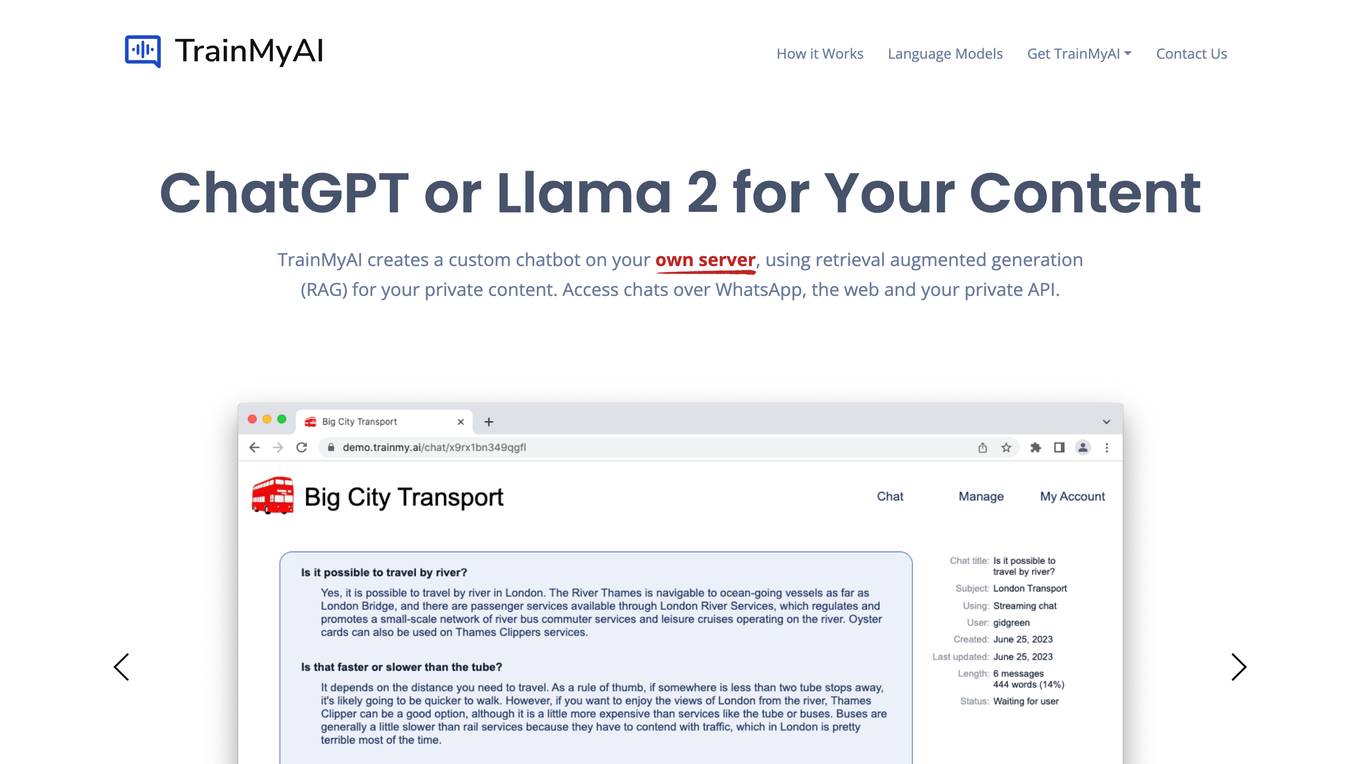
TrainMyAI
TrainMyAI is a comprehensive solution for creating AI chatbots using retrieval augmented generation (RAG) technology. It allows users to build custom AI chatbots on their servers, enabling interactions over WhatsApp, web, and private APIs. The platform offers deep customization options, fine-grained user management, usage history tracking, content optimization, and linked citations. With TrainMyAI, users can maintain full control over their AI models and data, either on-premise or in the cloud.

DeepSentinel
DeepSentinel is an AI application that provides secure AI workflows with affordable deep data privacy. It offers a robust, scalable platform for safeguarding AI processes with advanced security, compliance, and seamless performance. The platform allows users to track, protect, and control their AI workflows, ensuring secure and efficient operations. DeepSentinel also provides real-time threat monitoring, granular control, and global trust for securing sensitive data and ensuring compliance with international regulations.
0 - Open Source AI Tools
20 - OpenAI Gpts

Ordinals API
Knows the docs and can query official ordinal endpoints—Sat Numbers, Inscription IDs, and more.

There's An API For That - The #1 API Finder
The most advanced API finder, available for over 2000 manually curated tasks. Chat with me to find the best AI tools for any use case.

MilaexGPT
Mila-ex: Your solution to seamless data and price retrieval across cryptocurrency exchanges, through our unified and simple RESTful API.

Warcraft Logs Analisys
Azeroth Data Sage: A detailed Warcraft Log analysis with direct API access. Give the Sage link to a log, ask a question, and the Data Sage will provide!
Government of Canada Departmental Expenditures AI
Search and analyze Government of Canada departmental expenditures and full time employees, by program. Connected to Government of Canada API.

HubSpot Harry
Your go-to expert for all things HubSpot, from basic tool use to advanced API coding.

Sentitrac GPT
Get information about pro teams (NHL, NBA, NFL, MLB) teams by calling the ndricks Software Sports API.

Time Tracker Visualizer (See Stats from Toggl)
I turn Toggl data into insightful visuals. Get your data from Settings (in Toggl Track) -> Data Export -> Export Time Entries. Ask for bonus analyses and plots :)

ScreenScope
Your TV/Film Companion. Keep track of plot developments and character arcs in your favourite TV shows and films, spoiler-free.

EcoTracker Pro 🌱📊
Track & analyze your carbon footprint with ease! EcoTracker Pro helps you make eco-friendly choices & reduce your impact. 🌎♻️

AI Calorie Counter and NutriGoal Tracker
by Medicinex.tech: Simply snap a photo of your meals or nutrition label, and AI will calculate the calories and nutrients in your food and track progress.
